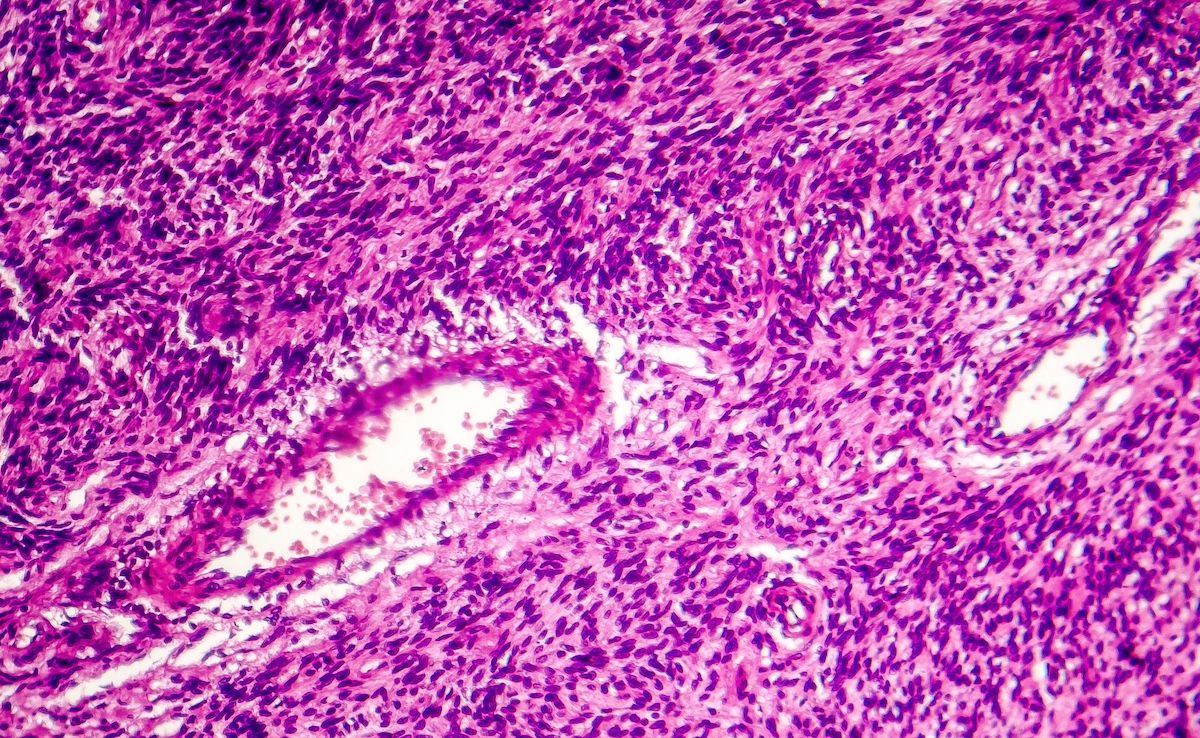News
Article
Exploring Critical Advances in ARDS, Asthma, Lung Cancer, Health Equity at ATS 2024
Author(s):
During a session at the American Thoracic Society (ATS) 2024 International Conference, experts presented the most impactful data from the last year on acute respiratory distress syndrome (ARDS), childhood asthma, health equity, and lung cancer.
During the first "Clinical Year in Review" session at the American Thoracic Society (ATS) 2024 International Conference, experts presented the most pivotal data from the last year on acute respiratory distress syndrome (ARDS), childhood asthma, health equity, and lung cancer. Each speaker echoed the need to address racial and ethnic health disparities and bias.

The Clinical State of ARDS
Since 1984, efforts have aimed to enhance the diagnostic accuracy of ARDS, leading to significant updates like the Berlin definition in 2012 and the Kigali modification in 2016, Shewit Giovanni, MD, MSCE, Oregon Health & Science University, explained. The most recent proposed extension of the Berlin definition in 2024 addresses implementation considerations, such as the rise in high-flow nasal cannula use, the previous definition’s limitations in resource-limited settings, and the inclusion of LUS and non-invasive pulse ox methods.1
This definition is not meant to replace the existing one but to be an extension, she said, emphasizing the sensitivity and specificity of the new definition and the need for further studies to understand patient heterogeneity adjustments.
She also highlighted the potential impact on interventional studies, patient understanding, and emerging data suggesting racial bias in pulse oximetry measurements.
A pair of significant COVID-19 studies were presented. The first examined the use of high-antibody titer convalescent plasma in patients with COVID-19, noting a significant reduction in 28-day mortality, particularly in patients intubated for less than 48 hours.2 The second study, part of an international adaptive platform trial, evaluated treatment for severe pneumonia in both COVID-19 and non-COVID-19 cases.3 The need for further analysis amid declining cases poses challenges for study design, Giovanni stated.
Referencing a secondary analysis published in Intensive Care Medicine, the study reviewed data from the ARDS Network and PETAL Network trials from 2019 onwards.4 The primary focus was on the representation and outcomes of minority patients over time, revealing that the overall representation of these groups did not significantly change. The analysis encompassed around 5300 patients with heart failure, with only 3.4% being Black, Hispanic, or from other underrepresented racial groups.
“Representation of racial and ethnic minority participants is similar over time, and the differences in mortality rates have improved,” Giovanni said.
A detailed look into the trial data indicated varying levels of minority representation: the ALVEOLI study had about 25% minority representation, while the Vioxx study, conducted a decade later, had 35%.5 She explained the discrepancy highlights the evolving but still inadequate representation in clinical trials. The results demonstrated significant differences in 90-day mortality rates among racial and ethnic groups, with Black patients experiencing higher mortality rates when treated conservatively versus more aggressive interventions. This finding underscores the critical need for diverse patient enrollment to ensure treatment efficacy and safety across different populations.
The analysis also showed that while overall mortality rates have decreased over time, this trend did not uniformly apply across all racial and ethnic groups. The decline in mortality and improvement in patient outcomes were more pronounced in the ARDS studies compared with those focused on heart failure or oncology, suggesting varying success in addressing systemic inequalities across different medical fields, Giovanni stated. She called for a deeper understanding of the factors contributing to these differences and the implementation of strategies to improve minority representation in clinical trials.
“We need to understand why this is different [from other studies], and areas in every clinically homogenetic should be studied,” Giovanni said. “And maybe this is minimizing any systemic inequality, unconscious or conscious bias. So we've got to see how this performs in real-life and pragmatic settings.”
The Clinical State of Childhood Asthma
Juan Carlos Cardet, MD, MPH, associate professor at the University of South Florida, discussed relevant research articles on community-level interventions for childhood asthma. A study published in JAMA, authored by Pollack et al., highlighted a housing mobility intervention that relocated families from high to low-poverty areas, resulting in a significant reduction in asthma exacerbations.6
“The justification for [the study] is that social determinants of health, as we all know, account for a substantial proportion of those in the US and that the Black population in this country bears a disproportionate burden,” Cardet said.
Pollack et al's study demonstrated a 50% decrease in asthma odds and nearly 60% fewer asthma-related emergency department visits, indicating the substantial impact of targeting social determinants of health.6
Another significant article by Rosas-Salazar et al., published in The Lancet, examined the link between RSV infection during infancy and childhood asthma. The study found a significant association between RSV infection and a lower prevalence of childhood asthma at 5 years, suggesting the potential for preventive measures like immunoprophylaxis against RSV.7
Additionally, Cardet discussed another study from The Lancet by Jackson et al., exploring the use of biologic therapy in reducing inhaled corticosteroid (ICS) doses for asthma management. The findings indicated that biologic therapy could decrease ICS doses, offering a potential alternative or adjunctive treatment for asthma.8
These studies, along with a few others he referenced in the presentation, support the importance of community-level interventions, early-life risk factors, and alternative treatments in managing childhood asthma. Cardet emphasized the need for further research to validate these findings and explore their broader applicability, contributing to the growing body of evidence supporting multifaceted approaches to asthma management and prevention.
The Clinical State of Health Equity
Aaron Dorian Baugh, MD, pulmonary and critical care physician and assistant professor of medicine at the University of California San Francisco, focused on health care disparities and innovative techniques in medical data analysis. His presentation discussed a study highlighting the higher risk of adverse events for Hispanic patients compared with other racial and ethnic groups.9 Baugh’s emphasis consistently echoed the need to understand the drivers of deviations from clinical guidelines and treatment recommendations, particularly in lung cancer screening eligibility.
The presentation highlighted the use of innovative techniques like the random survival forest model to analyze high-dimensional data and assess patient survival likelihood. Baugh noted the potential of machine learning and big data tools in identifying hidden drivers of inequity but also cautioned about potential biases in these technologies.
The implications of algorithmic bias in healthcare were addressed, citing an example where an algorithm perpetuated existing biases in patient care, particularly affecting Black patients. The need to acknowledge and mitigate biases in algorithmic decision-making was heavily focused on during other presentations like the first keynote: Artificial Intelligence in Medicine.
His thorough audit of bias in health care extended to the physician-patient relationship as well; Baugh featured an investigation conducted by Nunez et al. The findings exhibited that over 30% of decisions about lung cancer screening eligibility seemed to predominantly depend on the individual clinician making the decision, as opposed to multiple other assessed factors.10
“The most important thing of all that [Nunez] found—pretty shocking for me—was that almost 30% of the decision seemed to just be about who was making the decision, who was calling what's eligible and what is ineligible.," Baugh said. “...Depending on the clinician you had, the average patient with average characteristics in this study could have the likelihood of either 0.4% of being judged ineligible, all the way to 74%.”
The indication of this sizable variance goes well beyond explanations of reasonable differences in opinion and is “based on a strict application of ethics,” according to Baugh. “This has to be something a little bit more about the vicissitudes of how we make the decision and, maybe, what's in our hearts.”
The Clinical State of Lung Cancer
Matthew Triplette, MD, MPH, medical director of lung cancer screening at Fred Hutch Cancer Center’s presentation provided a comprehensive overview of recent advancements in lung cancer research and care. He highlighted the significance of epidemiology in understanding lung cancer trends, noting a steady decline in both lung cancer incidence and mortality over the past 20 years due to reduced smoking rates.11
The declining rate of lung cancer mortality is supported by data from a combined cancer registry representing 90% of the US population and can likely be attributed to the evolving lung cancer screening guidelines and the emergence of new screening methods and technologies. Triplette compared the updated guidelines from organizations like the UK National Screening Committee, US Preventive Services Task Force (USPSTF), Centers for Medicare & Medicaid Services (CMS), National Comprehensive Cancer Network, and the American Cancer Society, noting the continuous enhancement of screening criteria and the incorporation of value-based considerations into the screening conversation.12
However, Triplette acknowledged the need to address substantial state, regional, racial, and ethnic disparities in lung cancer outcomes, pointing out varying survival rates among different populations.
“Before we pat ourselves on the back too much, there are substantial state and regional, racial and ethnic differences in these trends, which are concerning,” Triplette explained. “So the five-year survival rate, for example, ranges from 26% of Asian American Pacific Islander populations, and only 19% of American Indian Alaskan Native populations.”
A notable study evaluated the sensitivity of different screening criteria for identifying lung cancer cases across racial and ethnic groups, suggesting that a risk-based screening approach could equitably identify at-risk individuals. The evaluation of 100,000 participants in the multiethnic cohort study compared the 2021 USPSTF criteria to the Prostate, Lung, Colorectal, and Ovarian (PLCOm2012) criteria.
This study compared the sensitivity of the different screening criteria for identifying lung cancer cases within 6 years across racial and ethnic groups, finding that the risk-based PLCOm2012 criteria performed similarly across groups, while the USPSTF criteria had a larger gap in recognizing Black patients who would develop lung cancer.
Overall, Triplette’s insights into recent advancements in lung cancer research supported the message delivered by each presentation: the need for continued efforts to address disparities, improve screening guidelines, and advance the understanding of disease states for the benefit of all populations.
Reference
1. Smit MR, Brower RG, Parsons PE, Phua J, Bos LDJ. The global definition of acute respiratory distress syndrome: ready for prime time?. Am J Respir Crit Care Med. 2024;209(1):14-16. doi:10.1164/rccm.202308-1369ED
2. Joyner MJ, Carter RE, Senefeld JW, et al. Convalescent Plasma Antibody Levels and the Risk of Death from Covid-19. N Engl J Med. 2021;384(11):1015-1027. doi:10.1056/NEJMoa2031893
3. REMAP-CAP Investigators, Gordon AC, Mouncey PR, et al. Interleukin-6 Receptor Antagonists in Critically Ill Patients with Covid-19. N Engl J Med. 2021;384(16):1491-1502. doi:10.1056/NEJMoa2100433
4. Giannakoulis VG, Papoutsi E, Kaldis V, Tsirogianni A, Kotanidou A, Siempos II. Postoperative acute respiratory distress syndrome in randomized controlled trials. Surgery. 2023;174(4):1050-1055. doi:10.1016/j.surg.2023.06.019
5.Krumholz HM, Ross JS, Presler AH, Egilman DS. What have we learnt from Vioxx?. BMJ. 2007;334(7585):120-123. doi:10.1136/bmj.39024.487720.68
6. Pollack CE, Roberts LC, Peng RD, et al. Association of a Housing Mobility Program With Childhood Asthma Symptoms and Exacerbations. JAMA. 2023;329(19):1671–1681. doi:10.1001/jama.2023.6488
7. Rosas-Salazar C, Chirkova T, Gebretsadik T, et al. Respiratory syncytial virus infection during infancy and asthma during childhood in the USA (INSPIRE): a population-based, prospective birth cohort study. The Lancet. 2023;401(10389):1669-80.
8. Jackson DJ, Heaney LG, Humbert M, et al. Reduction of daily maintenance inhaled corticosteroids in patients with severe eosinophilic asthma treated with benralizumab (SHAMAL): a randomised, multicentre, open-label, phase 4 study. The Lancet. 2024;403(10423):271-81.
9. Armstrong-Hough M, Lin P, Venkatesh S, et al. Ethnic disparities in deep sedation of patients with acute respiratory distress syndrome in the United States: Secondary Analysis of a Multicenter Randomized Trial. Annals of the American Thoracic Society. Published online February 7, 2024. doi:https://doi.org/10.1513/annalsats.202307-600oc
10. Núñez ER, Zhang S, Glickman ME, et al. What goes into patient selection for lung cancer screening? Factors associated with clinician judgments of suitability for screening. American journal of respiratory and critical care medicine. Published online October 11, 2023. doi:https://doi.org/10.1164/rccm.202301-0155oc
11. Kratzer TB, Bandi P, Freedman ND, et al. Lung cancer statistics, 2023. Cancer. 2024; 130(8): 1330-1348. doi:10.1002/cncr.35128
12. Katharine A. Rendle, Chelsea A. Saia, Anil Vachani, et al. Rates of Downstream Procedures and Complications Associated With Lung Cancer Screening in Routine Clinical Practice: A Retrospective Cohort Study. Ann Intern Med.2024;177:18-28. [Epub 2 January 2024]. doi:10.7326/M23-0653
Choi E, Ding VY, Luo SJ, et al. Risk Model-Based Lung Cancer Screening and Racial and Ethnic Disparities in the US. JAMA Oncol. 2023;9(12):1640-1648. doi:10.1001/jamaoncol.2023.4447





